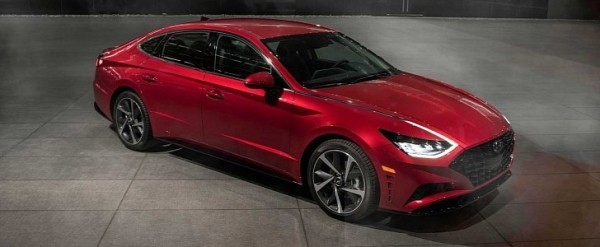
The 2.5-liter engine which relies on natural aspiration levels up to 181 horsepower but it’s down on torque (181 pound-feet). On the upside, customers can expect up to 33 miles to the gallon on the combined cycle. Later on, the hybrid and plug-in hybrid will return to the lineup with better numbers than the current generation of the Sonata.
“Sensuous Sportiness” is how Hyundai calls the design language, but the South Korean sedan also happens to be extremely efficient in terms of aerodynamics. The drag coefficient of 0.27, which is better than the Toyota Camry. The directional wheels ranging from 16 to 18 inches and sleek taillights help the Sonata in this regard, as do the eye-catching trunk spoiler and diffuser.
Taking inspiration from the Le Fil Rouge four-door coupe concept from the 2018 Geneva Motor Show, the mid-size sedan “will prove to be a yet another successful step for our new design language and will provide emotional value for the customers” according to Sang Yup Lee, senior vice president and head of Hyundai Design Center.
Step inside, and you’re treated to a 12.3-inch digital instrument cluster that’s a first in this segment. A 10.25-inch HD touchscreen is how the infotainment system is controlled, and instead of a gear lever, the transmission is operated by pressing buttons on the center console. These buttons are arranged in an R-N-D cluster flanked by P to the left. Looking at Acura, it’s fair to claim that Hyundai has a better implementation than Honda’s luxury division.








